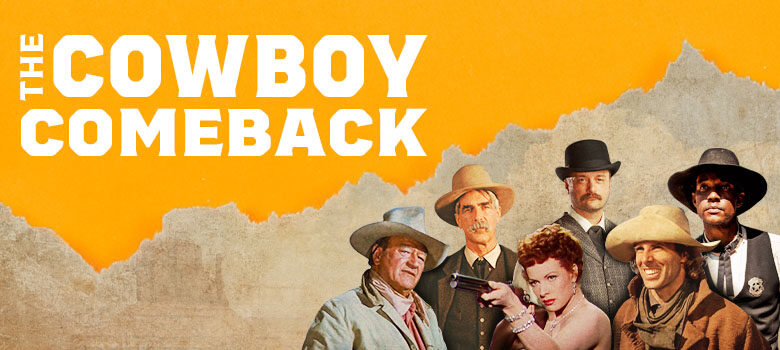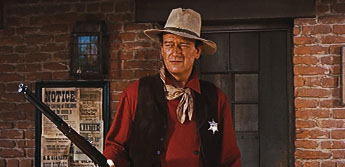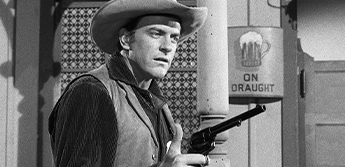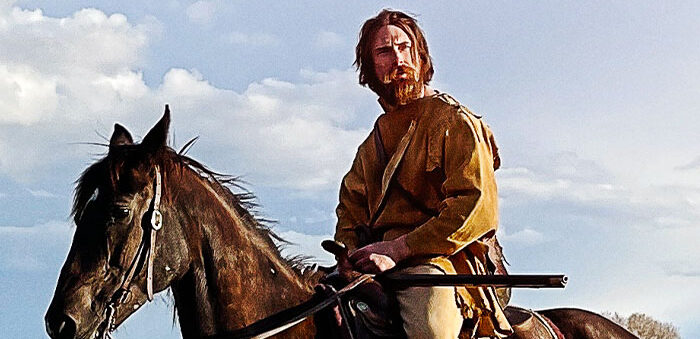The Return of the Western: The Current Resurgence

The Return of the Western: The Current Resurgence
By Henry C. Parke
Every genre of film and television entertainment rises and falls in popularity – musicals, mysteries, super-heroes, Westerns. Box office numbers tell us at a glance that the men and women in tights are currently in the driver’s seat. But with so many theatres operating marginally or not at all, and home viewership fractured into “linear viewing” (watching scheduled TV), and streaming, and Video on Demand, what is not so obvious, but absolutely true, is that there is a major surge in the popularity of Western films and TV.
 How can we tell? Because the people who have the money to make any kind of film at all are making more westerns. The year 2021 was bookended by comparatively big-budget films with an unusually wide range of stories and tones: opening just after Christmas 2020 was the traditional News of the World, starring Tom Hanks as a professional newsreader trying to reunite a rescued child with her German family. The less serious and more action-packed The Harder They Fall, starring Jonathan Majors as an outlaw looking for revenge against an even worse outlaw, played by Idris Elba, opened last November. And December brought The Power of the Dog, Jane Campion’s subversive New Zealand-filmed Western, which is currently sweeping Best Picture awards from film festivals and is a likely Oscar contender in many categories. All are spectacularly beautiful. Their budgets varied from $30,000,000 to $90,000,000, but there is even more activity in smaller films. As Bruce Dern, a screen menace for over sixty years points out, while studios had been shying away from the genre, claiming “it would cost a hundred million to make a Western, the people I know can make a Western for $2 million.”
How can we tell? Because the people who have the money to make any kind of film at all are making more westerns. The year 2021 was bookended by comparatively big-budget films with an unusually wide range of stories and tones: opening just after Christmas 2020 was the traditional News of the World, starring Tom Hanks as a professional newsreader trying to reunite a rescued child with her German family. The less serious and more action-packed The Harder They Fall, starring Jonathan Majors as an outlaw looking for revenge against an even worse outlaw, played by Idris Elba, opened last November. And December brought The Power of the Dog, Jane Campion’s subversive New Zealand-filmed Western, which is currently sweeping Best Picture awards from film festivals and is a likely Oscar contender in many categories. All are spectacularly beautiful. Their budgets varied from $30,000,000 to $90,000,000, but there is even more activity in smaller films. As Bruce Dern, a screen menace for over sixty years points out, while studios had been shying away from the genre, claiming “it would cost a hundred million to make a Western, the people I know can make a Western for $2 million.”
Director Joe Cornet, whose 2021 Western release, Promise, stars Don Murray, noted growing interest with his distributor after his first Western, A Prayer for The Damned.
“They saw an early cut, and they said, ‘We like this.’ I said, I’m in the middle of making another one. ‘We’ll take that one too.’ Then they wanted a third one.”
The fourth one, Assault on Rio Bravo, will be released later in the year. Similarly, in the midst of the pandemic, Michael Feifer directed four westerns, and two, Catch the Bullet and The Last Shoot Out, came out in 2021. Travis Mills filmed a dozen Westerns in 2020 and released them one a month in 2021. And all of these films are available on various streaming services.
The renewed interest in the form has been seen in television as well. Doug Butts, INSP’s Executive Vice President of Programming, notes, “We’ve been noticing it over a couple of years. Westerns are our great escape: justice and timeless values, good guys beating the bad, getting the girl at the end: it all works, you know.” With a target audience of 55 plus, “a demographic we believe is underserved,” they began by providing “mild general entertainment, The Waltons, Anne of Green Gables, things like that.” But as Westerns have driven INSP viewership, a growth that’s continued for seven years, INSP adopted the slogan, “Heroes Live Here”, and just this month added a cowboy hat to their logo. “Everything looks better with a hat on it,” Butts notes with a chuckle.

In fact, Westerns are suddenly all over television. 1883, Taylor Sheridan’s prequel series to his contemporary Western Yellowstone, is a hit for Paramount +, and gives viewers the pleasure of watching Sam Elliot saddle up once again. Later in the year, EPIX viewers can watch Billy the Kid, an eight-chapter miniseries from Michael Hirst, the creator of The Tudors and Vikings. And FX has just announced that the Elmore Leonard-based series Justified is going back into production, with Timothy Olyphant back as Raylan Givens.
INSP not only continues to show classic Western films and series like The High Chaparral, Cheyenne, and Wagon Train, they’ve now acquired all twenty seasons of Gunsmoke, “And CBS Viacom went back, and they made ’em HD.”
So, what is driving this renewed fascination? To a great degree, it’s the nation’s reaction to the COVID pandemic, which has created an international claustrophobia, and also given us more time, maybe too much time, to consume entertainment. “I think that has a lot to do with it,” says Cornet. “I think people want to open up and see the great outdoors. They want to see people on horseback, big magnificent vistas.” Butts agrees. “I actually had COVID back in September, and I sat back and watched our network quite a bit, and other platforms as well. And I saw the beauty of the Westerns, and the west. The escape. We’ve had so many viewers tell us that you just don’t know what INSP means to us during this terrible pandemic.”
 INSP has also upped their game by creating more original programming, with a new season of Wild West Chronicles, the new hour-long docudrama series Into the Wild Frontier, and Freedom on the Range, a special celebrating African American cowboys, past and present. Best of all, they’ll have six original movies this year, four “Western-adjacent” and two Westerns. Butts isn’t ready to share details, but notes, “We look at our movies as backdoor pilots.”
INSP has also upped their game by creating more original programming, with a new season of Wild West Chronicles, the new hour-long docudrama series Into the Wild Frontier, and Freedom on the Range, a special celebrating African American cowboys, past and present. Best of all, they’ll have six original movies this year, four “Western-adjacent” and two Westerns. Butts isn’t ready to share details, but notes, “We look at our movies as backdoor pilots.”
The growing appetite for Westerns has manifested in films coming from unlikely, or at least unusual, sources. Old Henry is a darkly intense and effective story about aging farmer Tim Blake Nelson, who helps a wounded outlaw, and must contend with his gang. The film comes from Shout Factory, a company whose business for years has been selling DVD collections of TV series. The Last Son, which stars Sam Worthington as a man with a premonition that he would die at one of his offspring’s hands, also stars Thomas Jane, Heather Graham and, in a bid to broaden the film’s appeal, rapper Machine Gun Kelly. It comes from Redbox Entertainment, the people who run those DVD-dispensing kiosks, and they intend to start producing three new movies a month! Even Taylor Sheridan’s 1883 is an MTV production. And don’t discount these companies’ chances for success—remember that Lonesome Dove was a Motown Production.
The fact that the resurgence of Westerns began with COVID does not mean the genre will disappear once it’s safe to take off our masks. After all, the Golden Age of Hollywood films began with the Great Depression of the 1930s, but it continued for decades. But just as so many of us around the country started buying take-out food in an attempt to save our beleaguered restaurants, if we want the Westerns to continue, we again need to put our money where our mouths are. If you use streaming services, check out the trailers for Westerns, and if they look good, watch ‘em. If you get your entertainment through Redbox or Walmart or websites, buy something. If you like a show, new or old, let the network know on their social media pages—that’s how fan mail works today, and Doug Butts tells me they read some viewer comments at every meeting. Film making is so expensive; it’s been described as painting with money. Give the Western makers a reason to keep investing.
About Henry C. Parke
Brooklyn-born, L.A.-based screenwriter and wanna-be cowboy Henry C. Parke has been Film Editor for True West since 2015, and written Henry’s “Western Round-up,” the on-line report on Western film production, since 2010. His screenwriting credits include Speedtrap (1977) and Double Cross (1994). He’s the first writer welcomed into the Western Writers of America for his work in electronic media. He’s done audio commentary on a fistful of Spaghetti and domestic Westerns, and he’s got a saddle-bag full of Western scripts.
Can’t get enough of Henry? More blogs are coming to insp.com. In the meantime…
Follow him on Facebook



